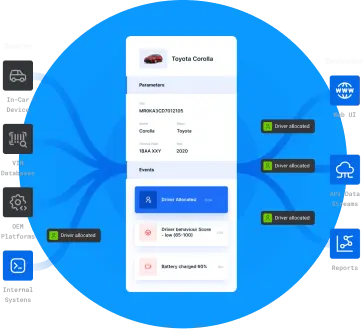
Growing your fleet business offers numerous benefits, including better supplier discounts, the ability to hire more drivers, and offering competitive pricing to clients. However, scaling a fleet requires careful planning, financial management, and the right tools. Here’s how to grow your fleet successfully.
1. Plan Ahead
A well-structured business plan is essential when growing your fleet. It should include details about your assets, budget, objectives, and growth strategies. Planning ahead helps you assess risks, allocate resources efficiently, and set realistic milestones. Understanding the current market trends and customer needs will also allow you to identify growth opportunities and make informed decisions as you scale.
2. Choose the Right Financial Strategy
Financing your fleet growth requires careful consideration of your cash flow and long-term goals. Leasing allows you to expand without large upfront costs, while financing through a bank provides full ownership of your vehicles. Purchasing used trucks can be a cost-effective option, offering lower prices compared to new models. Evaluate each option’s impact on your budget and business objectives to determine the best financial strategy for your fleet.
3. Grow Steadily
Rapid expansion can strain your resources and increase risk. Taking small, calculated steps allows you to test strategies and adapt before making larger investments. Start by adding one truck at a time and ensuring that each new addition is profitable before expanding further. Similarly, carefully vet and hire drivers to maintain service quality and operational efficiency.
4. Build a Loyal Customer Base
A loyal customer base provides consistent revenue and promotes your business through word-of-mouth. Understand your customers’ needs and tailor your services to meet them. Establish a dedicated team to acquire new clients and build strong relationships with existing ones. Providing excellent service and maintaining open communication will help retain customers and support your fleet’s growth.
5. Stay Compliant with Trucking Regulations
Trucking regulations change frequently at the local, state, and federal levels. Staying updated ensures compliance, avoiding fines, and maintaining operational efficiency. Implementing regular training and using fleet management tools can help monitor compliance and prepare your fleet for regulatory changes.
6. Use Fleet Management Software
As your fleet grows, managing daily operations manually becomes challenging. Fleet management software provides real-time data on vehicle performance, fuel usage, driver behavior, and compliance. Rand McNally’s platform offers cloud-based solutions that help optimize routes, reduce costs, and improve overall efficiency, making fleet expansion more manageable.
Grow Your Fleet with Rand McNally
Rand McNally offers a suite of fleet management solutions designed to support fleet growth. From GPS tracking and route optimization to real-time vehicle monitoring and compliance management, our tools help fleets of all sizes operate efficiently. Contact us today for more information, product details, pricing, or to schedule a demo.





